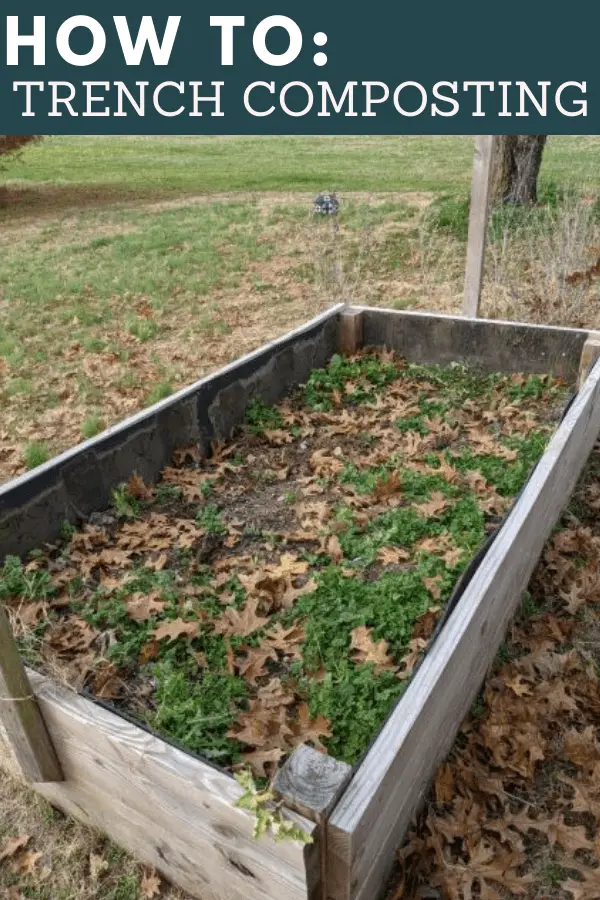In this article, we will discuss the benefits of using compost in raised bed gardening. You will learn how compost enriches the soil, improves plant growth, and reduces the need for chemical fertilizers. We will also address the common question of whether raised beds need compost every year. By the end of this article, you will have a better understanding of why compost is a valuable addition to your raised bed garden.
Benefits of Using Compost in Raised Bed Gardening
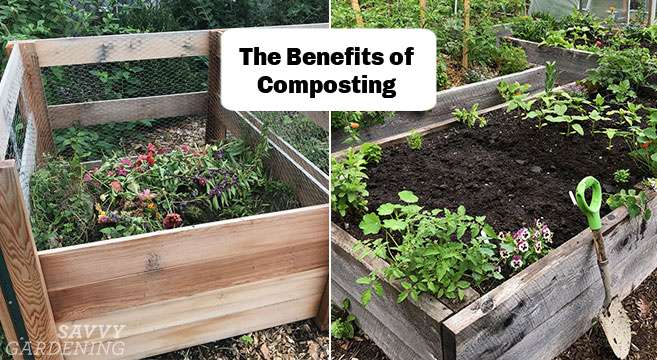
Introduction
In the world of gardening, there are various methods and techniques that can be employed to enhance plant growth and productivity. One such technique that has gained popularity in recent years is raised bed gardening. Raised beds offer numerous advantages, including improved soil drainage, better control over soil composition, and increased accessibility. To maximize the benefits of raised bed gardening, incorporating compost into the soil is essential. Compost, often referred to as “black gold,” is a nutrient-rich organic material that can greatly enhance the health and productivity of plants. In this article, we will explore the benefits of using compost in raised bed gardening, its importance, application methods, potential challenges, and more.
What is Compost?
Definition of compost
Compost is a dark, crumbly substance that is created through the decomposition of organic materials such as kitchen scraps, yard waste, and plant matter. It is often referred to as “nature’s recycling system” as it transforms waste into a valuable resource.
How compost is made
Compost is made through a process called composting. It involves the breakdown of organic materials by microorganisms, such as bacteria and fungi, in the presence of oxygen. These microorganisms break down the organic matter into simpler compounds, resulting in the creation of nutrient-rich compost.
Components of compost
Compost consists of a blend of organic materials, including kitchen scraps like fruit and vegetable peels, coffee grounds, yard waste such as grass clippings and leaves, and other plant-based materials. These materials provide the necessary carbon and nitrogen balance for efficient decomposition.
Benefits of using compost in gardening
Using compost in gardening has numerous benefits. It improves soil structure, increases nutrient content, enhances water retention and drainage, and promotes the activity of beneficial microorganisms in the soil. These benefits result in healthier plants with improved growth and yield.
Raised Bed Gardening
Explanation of raised bed gardening
Raised bed gardening is a method of gardening that involves planting in elevated garden beds rather than directly in the ground. These beds are typically framed using materials such as wood, stone, or concrete and filled with soil. The raised bed structure offers several advantages over traditional gardening methods.
Advantages of using raised beds
Raised beds offer several advantages over traditional gardening methods. Firstly, they provide better control over soil quality and composition. This is particularly beneficial for gardeners with poor soil conditions or limited space for gardening. Secondly, raised beds provide improved soil drainage, preventing excess water accumulation and reducing the risk of root rot. Additionally, raised beds offer easier access for planting, maintenance, and harvesting, making gardening more convenient and enjoyable.
Types of materials for raised beds
Raised beds can be constructed using various materials, each with its own advantages and considerations. Wood is a popular choice due to its affordability, versatility, and ease of construction. Other options include concrete blocks, stone, or metal. When choosing materials, it is important to consider factors such as durability, aesthetics, and compatibility with the garden’s overall design.
Factors to consider when building raised beds
When building raised beds, there are several factors to consider. Firstly, the size and height of the beds should be appropriate for the plants being grown and the gardener’s needs. Taller beds are beneficial for individuals with mobility issues or those who prefer to garden while standing. Additionally, location and sun exposure should be taken into account to ensure optimal growing conditions. Finally, proper drainage must be ensured by incorporating drainage holes or gravel layers at the bottom of the beds.
Importance of Compost in Raised Bed Gardening
Enhances soil structure in raised beds
One of the key benefits of using compost in raised bed gardening is its ability to enhance the soil structure. Compost improves soil texture and tilth, creating a loose and crumbly soil that is optimal for root growth. This enhanced soil structure allows roots to penetrate easily, absorb nutrients efficiently, and facilitates the exchange of gases necessary for proper plant respiration.
Increase nutrient content in the soil
Compost acts as a natural fertilizer, increasing the nutrient content of the soil. It contains essential elements such as nitrogen, phosphorus, and potassium, as well as a range of micronutrients necessary for plant growth. By using compost, gardeners can ensure that their plants have access to a steady supply of nutrients, resulting in healthier and more productive plants.
Improves water retention and drainage
Another important benefit of compost in raised bed gardening is its ability to improve water retention and drainage. Compost has excellent water-holding capacity, allowing it to absorb and retain moisture. This is particularly beneficial during periods of drought or dry spells when water availability may be limited. Additionally, compost helps improve drainage in heavy soils, preventing waterlogging and reducing the risk of root diseases caused by excess moisture.
Promotes beneficial microorganism activity in the soil
Compost is teeming with beneficial microorganisms such as bacteria, fungi, and earthworms. These microorganisms improve soil health by breaking down organic matter further, releasing nutrients in forms that are readily absorbed by plants. They also help suppress harmful pathogens and pests, creating a naturally balanced ecosystem in the soil. Using compost in raised bed gardening promotes the activity of these beneficial microorganisms, providing a foundation for healthy plant growth.
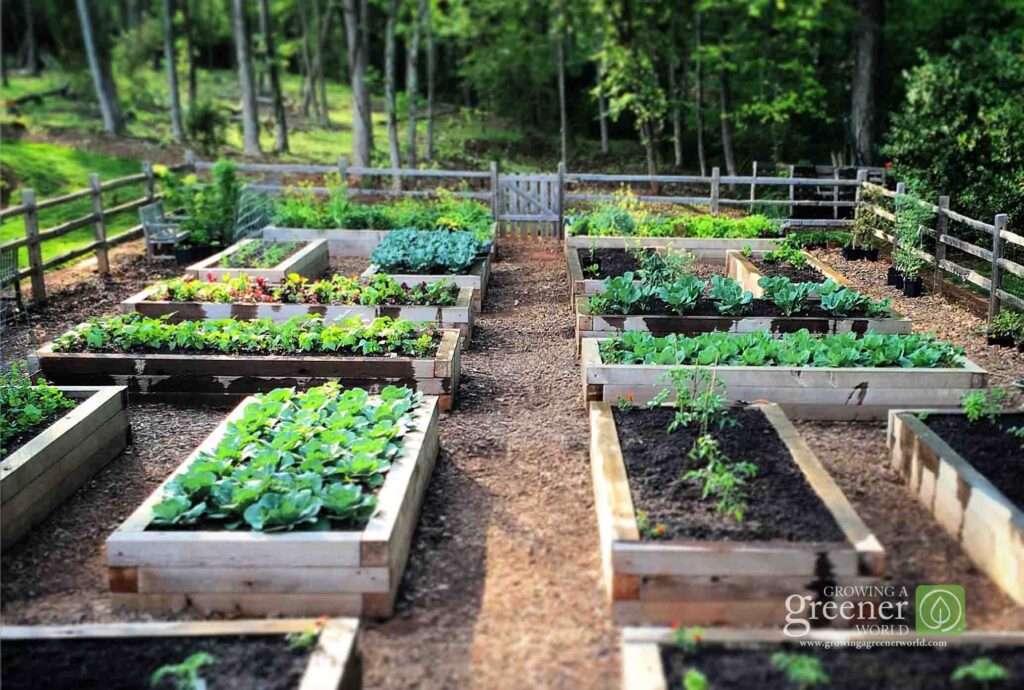
Applying Compost to Raised Beds
When to apply compost
The timing of compost application is crucial for optimal results. Compost can be added to raised beds before planting, during planting, or as a top dressing during the growing season. Applying compost before planting allows it to gradually release nutrients, benefiting plants throughout their growth cycle. Incorporating compost during planting ensures that plants have immediate access to nutrients as their roots develop. Top dressing with compost during the growing season helps replenish nutrient levels and maintain soil fertility.
How much compost to use
The amount of compost needed for raised beds depends on several factors, including the size of the beds, the type of plants being grown, and the condition of the soil. As a general guideline, adding a 2- to 3-inch layer of compost to the topsoil is recommended. However, it is important to avoid over-application, as excessive amounts of compost can lead to imbalances in nutrient levels and hinder plant growth.
Methods of applying compost
Compost can be applied to raised beds using various methods. It can be spread evenly across the surface of the beds and incorporated into the top few inches of soil using a garden fork or a tiller. Alternatively, compost can be used as a mulch by spreading a layer of compost around the base of plants, keeping a gap around the stems to prevent rot. Both methods provide plants with access to the nutrients present in compost and promote healthy growth.
Incorporating compost into raised bed soil
When applying compost to raised beds, it is essential to incorporate it into the existing soil for optimal results. This can be done by either mixing the compost with the soil before filling the raised beds or by layering the compost and soil alternately as the beds are being filled. Properly incorporating compost ensures that nutrients are evenly distributed throughout the bed and readily available to plants.
Compost Tea for Raised Beds
Definition of compost tea
Compost tea is a liquid fertilizer made by steeping compost in water. It contains all the beneficial microorganisms, nutrients, and organic compounds present in the compost. Compost tea provides a concentrated form of compost that can be easily absorbed by plants, promoting their overall health and vitality.
How to make compost tea
To make compost tea, fill a container with water and add a certain amount of compost, typically 1 part compost to 5 parts water. Allow the mixture to steep for 24-48 hours, stirring occasionally. After steeping, strain the liquid to remove large particles, and then apply it to the raised beds using a watering can or a sprayer.
Benefits of using compost tea in raised beds
Using compost tea in raised beds offers several benefits. Firstly, it provides plants with a readily accessible source of nutrients, promoting their growth and overall health. Secondly, compost tea helps stimulate the growth of beneficial microorganisms in the soil, further enhancing plant root development and nutrient uptake. Finally, compost tea can also help suppress disease-causing organisms, reducing the risk of plant infections and improving overall plant resilience.
Application methods and frequency of compost tea
Compost tea can be applied to raised beds using various methods. It can be watered directly onto the soil around the base of plants, ensuring that the liquid penetrates into the root zone. Alternatively, compost tea can be sprayed onto the foliage of plants, allowing the nutrients to be absorbed through the leaves. The frequency of compost tea application depends on the specific needs of the plants and can range from weekly to monthly, depending on their growth stage and overall health.
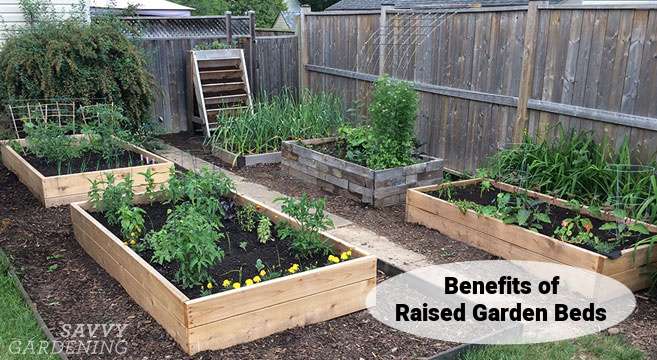
Long-Term Benefits of Using Compost
Improved soil fertility over time
One of the most significant long-term benefits of using compost in raised bed gardening is the improvement of soil fertility. Over time, the addition of compost enriches the soil with organic matter, increasing its nutrient-holding capacity and enhancing its overall fertility. This leads to healthier and more productive soils that can support a wide range of plant species.
Reduces the need for synthetic fertilizers
By using compost, gardeners can reduce their reliance on synthetic fertilizers. Compost provides a natural and sustainable source of nutrients, reducing the need for chemical-based fertilizers that can harm the environment and have negative long-term effects on soil health. This reduction in synthetic fertilizer use promotes organic and sustainable gardening practices.
Enhanced plant growth and yield
The use of compost in raised bed gardening promotes healthier and more robust plant growth. The organic matter and nutrients present in compost provide plants with the necessary resources for optimal development, resulting in increased yield, improved flowering, and higher fruit or vegetable production. The enhanced growth and yield are particularly evident when compared to plants grown in soil with inadequate nutrient levels.
Reduction in pests and diseases
Compost contributes to the overall health and resilience of plants, making them less susceptible to pests and diseases. The presence of beneficial microorganisms in compost helps create a balanced soil ecosystem, suppressing harmful pathogens and pests. Additionally, the improved soil structure and nutrient content resulting from compost use promote strong plant growth, making plants more capable of withstanding pest attacks and diseases.
Environmental Impact of Composting
Reduces waste in landfills
Composting significantly reduces the amount of organic waste that ends up in landfills. When organic materials, such as kitchen scraps and yard waste, are composted instead of being disposed of as trash, they are transformed into valuable compost. This diversion of organic waste helps reduce the demands on landfills, prolonging their lifespan and mitigating the associated environmental issues.
Decreases greenhouse gas emissions
Composting also contributes to the reduction of greenhouse gas emissions. When organic waste decomposes in landfills, it produces methane, a potent greenhouse gas. By composting organic materials, methane emissions are minimized, thereby mitigating the impact on climate change and improving overall air quality.
Protects water quality
The use of compost in raised bed gardening helps protect water quality. Compost improves soil structure, reducing the runoff of water and the associated loss of nutrients and chemicals. By minimizing nutrient runoff, composting supports water conservation efforts and prevents the contamination of water bodies, preserving the integrity of local ecosystems.
Promotes sustainable gardening practices
By utilizing compost in raised bed gardening, individuals contribute to sustainable gardening practices. Composting provides a closed-loop system wherein organic waste is recycled and transformed into a valuable resource. This practice reduces the reliance on external inputs such as synthetic fertilizers and fosters an appreciation for the natural processes that sustain our gardens and the environment as a whole.

Common Misconceptions about Compost in Raised Bed Gardening
Compost attracts pests
One common misconception about compost is that it attracts pests. While it is true that decomposing organic matter can initially attract some pests, proper composting techniques and proper incorporation into the soil greatly reduce the risk of attracting unwanted pests. By maintaining a healthy balance of organic materials and properly managing the composting process, the risk of pest infestations can be minimized.
Composting requires too much time and effort
Some may perceive composting as a labor-intensive and time-consuming process. However, composting can be as simple as collecting kitchen scraps and yard waste in a compost bin or pile. With minimal effort in turning and occasional moisture management, the composting process can occur naturally, requiring minimal time and effort from the gardener.
Compost smells bad
Another misconception is that compost has a foul odor. While composting can produce an earthy smell during the decomposition process, a properly managed compost pile should not smell unpleasant. Unpleasant odors often indicate improper composting conditions, such as excessive moisture or an imbalance of carbon and nitrogen-rich materials. By maintaining the correct balance and managing compost moisture levels, foul odors can be minimized.
Compost does not provide enough nutrients
Some may believe that compost alone does not provide sufficient nutrients for plants. While compost alone may not fulfill all nutrient requirements, it serves as an excellent source of organic matter and a supplement to the existing soil. Combined with other organic and inorganic fertilizers, compost can significantly improve soil fertility and the nutrient content required for healthy plant growth.
Potential Challenges of Using Compost in Raised Bed Gardening
Sourcing quality compost
One challenge gardeners may face is sourcing quality compost. It is essential to obtain compost from reliable sources to ensure its nutrient content and absence of contaminants. Home composting is a viable option, allowing gardeners to have complete control over the composting process. Alternatively, purchasing compost from reputable suppliers or local farms can provide assurance of its quality.
Balancing nutrient levels in the soil
Another challenge when using compost is achieving the right balance of nutrients in the soil. Different plants have varying nutrient requirements, and excessive use of compost can lead to nutrient imbalances or nutrient toxicities. It is important to understand the nutrient needs of the plants being grown and to monitor soil nutrient levels regularly to avoid any potential issues.
Over-application of compost
Over-application of compost can also be a challenge. While compost is highly beneficial, using excessive amounts can lead to imbalances in nutrient levels and hinder plant growth. It is crucial to follow recommended guidelines and avoid applying more compost than necessary. Regular soil testing can help gauge nutrient levels and adjust compost application accordingly.
Managing compost decomposition
Proper management of compost decomposition can be challenging for some gardeners. The decomposition process requires a balance of moisture, oxygen, and temperature, which can be influenced by factors such as weather conditions, the size of the compost pile, and the carbon-to-nitrogen ratio of the composting materials. Regular monitoring and occasional turning of the compost pile help maintain optimal conditions for decomposition.
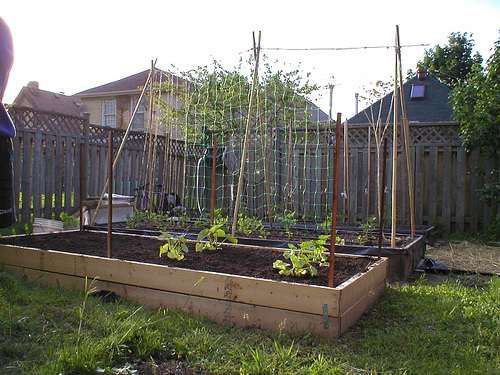
How to Make and Maintain a Compost Pile
Ingredients for a successful compost pile
To create a successful compost pile, a proper mix of organic materials is crucial. It is recommended to include a balance of green (nitrogen-rich) and brown (carbon-rich) materials. Green materials include fruit and vegetable scraps, grass clippings, and fresh plant matter, while brown materials include dry leaves, straw, and wood chips. Avoid adding meat, dairy, or oily substances, as they can attract pests or slow down the decomposition process.
Composting methods and techniques
There are various composting methods to choose from, depending on the available space, time, and desired composting speed. Traditional composting involves creating a pile or bin where organic materials are deposited, allowing them to decompose naturally over time. Other options such as vermicomposting (using worms) or compost tumblers can speed up the process. Each method has its own requirements and benefits, so it is important to choose one that suits the individual’s needs and preferences.
Tips for maintaining a healthy compost pile
To maintain a healthy compost pile, several key factors should be considered. Firstly, moisture levels should be monitored to ensure that the compost is adequately moist without being overly saturated. Regular turning of the pile helps oxygenate the compost, promoting decomposition. Additionally, the pile should be protected from extreme weather conditions to prevent excessive drying or waterlogging. Lastly, maintaining a proper carbon-to-nitrogen ratio, commonly referred to as the C/N ratio, ensures efficient decomposition and prevents odor issues.
Troubleshooting common composting issues
Common composting issues can be easily resolved with proper troubleshooting techniques. For example, a compost pile that smells foul may indicate that the carbon-to-nitrogen ratio is imbalanced or that the pile is too wet. Adjusting the ratio by adding more brown materials or incorporating dry leaves can help alleviate the odor. Other issues, such as slow decomposition or pest infestations, can also be addressed by adjusting the compost pile conditions, such as turning the pile more frequently or ensuring proper moisture levels.
Comparing Compost to Other Soil Amendments
Comparison to synthetic fertilizers
Compost differs from synthetic fertilizers in several ways. While synthetic fertilizers provide a quick source of nutrients, they do not improve soil structure or foster the same level of microbial activity as compost. Additionally, synthetic fertilizers can leach into water bodies, contributing to water pollution. Compost, on the other hand, provides a slow-release source of nutrients, improves soil health, and sustains a more balanced soil ecosystem.
Comparison to peat moss
Peat moss, a commonly used soil amendment, differs from compost in its environmental impact and nutrient content. Peat moss is harvested from natural peat bogs, which are non-renewable resources. In contrast, compost is created from organic waste, contributing to waste reduction and sustainability. Additionally, compost contains a wide range of nutrients, making it more beneficial for overall plant health compared to peat moss, which has limited nutrient content.
Comparison to vermicompost
Vermicompost, or worm castings, is similar to compost but is produced using worm digestion as the primary decomposition process. Vermicompost offers similar benefits to compost, such as improved soil structure and increased nutrient content. However, vermicompost is typically more nutrient-dense and contains higher levels of beneficial microorganisms. Both compost and vermicompost have unique qualities, and their use can be complementary in gardening practices.
Comparison to manure
Manure, like compost, is an organic material that can enhance soil fertility. However, there are notable differences between the two. Manure is a primary source of nutrients and organic matter, but it requires careful handling and appropriate aging to prevent the introduction of pathogens. Compost, on the other hand, goes through a complete decomposition process, reducing the likelihood of harmful pathogens. Compost also offers a wider range of nutrients compared to manure, making it a more well-rounded soil amendment.
Conclusion
The benefits of using compost in raised bed gardening are wide-ranging and significant. Compost improves soil structure, increases nutrient content, enhances water retention and drainage, and promotes beneficial microorganisms in the soil. Incorporating compost into raised beds provides plants with the necessary resources for optimal growth and productivity. Compost tea offers another avenue for utilizing the benefits of compost, providing plants with a concentrated source of nutrients and beneficial microorganisms. Long-term benefits include improved soil fertility, reduced reliance on synthetic fertilizers, increased plant growth and yield, and improved pest and disease resistance. Composting also has positive environmental impacts, such as reducing waste in landfills, decreasing greenhouse gas emissions, and protecting water quality. While there may be misconceptions, challenges, and alternative soil amendments to consider, using compost in raised bed gardening remains a valuable and sustainable practice. So why wait? Start reaping the benefits of compost in your raised bed garden today for healthier plants and a more environmentally friendly approach to gardening.
References:
- Bliss, T. (2021, May 3). What’s So Great About Compost? Retrieved from The Old Farmer’s Almanac: https://www.almanac.com/news/gardening/gardening-advice/what-compost-and-its-benefits
- Marini, R. (2019, June 13). Building and Using Compost in Your Garden. Retrieved from University of Connecticut College of Agriculture, Health and Natural Resources: https://naturally.uconn.edu/2019/06/13/building-and-using-compost-in-your-garden/
- Rynearson, T. (2020, July 9). How to Make and Use Compost Tea in Raised Beds. Retrieved from GrowVeg: https://www.growveg.com/guides/how-to-make-and-use-compost-tea-in-raised-beds/

